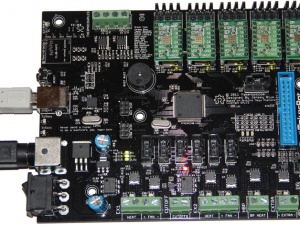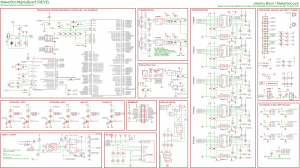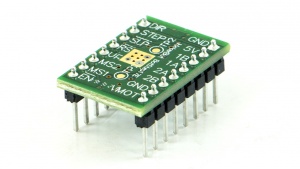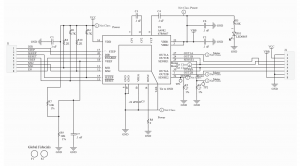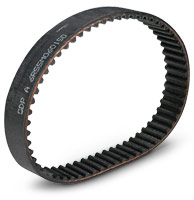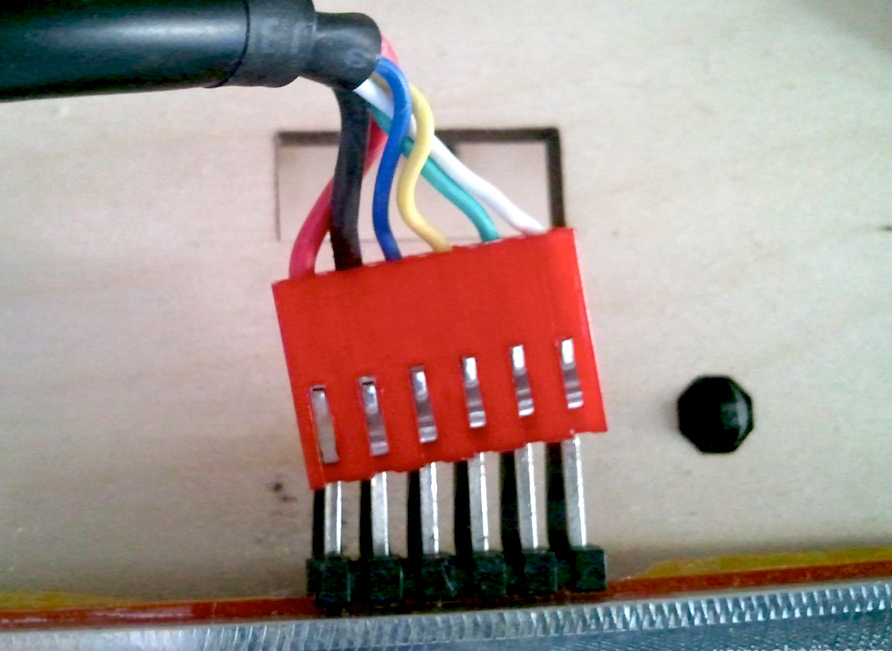MakerBot Replicator 1 Upgrades and Repairs: Difference between revisions
No edit summary |
|||
| Line 114: | Line 114: | ||
* [https://groups.google.com/forum/?fromgroups=#!topic/makerbot/jT184sCEItw Replicator Top 10 upgrades thread] | * [https://groups.google.com/forum/?fromgroups=#!topic/makerbot/jT184sCEItw Replicator Top 10 upgrades thread] | ||
* [http://www.thingiverse.com/thing:35857 Replicator Upgrade Thingiverse List] | * [http://www.thingiverse.com/thing:35857 Replicator Upgrade Thingiverse List] | ||
* [http://coolate.com/blog/blog/2015/02/23/its-alive-makerbot-replicator-repaired/ It’s Alive! Makerbot replicator repaired!] | |||
* [https://www.reddit.com/r/3Dprinting/comments/3rns41/shorted_my_3d_printer_mightyboard_could_i_replace/ Shorted my 3d printer Mightyboard] | |||
Revision as of 09:35, 4 June 2016
This is a quick list of great upgrades to improve the printing quality of the MakerBot Replicator 1.
MakerBot Replicator 1 Firmware Upgrade
General Upgrades
Below is a list of some good tips for improving printing performance and accuracy.
- First major upgrade should be side panels and maybe a hood. You want to control the air flow in the print chamber and help keep the chamber temperature stable. This will greatly minimize, or maybe eliminate, peeling/curling of ABS prints. A cheap method is to just use a few large paper sheets to cover up the sides including the top.
- Flash the Sailfish Firmware. The standard firmware is fine, but the Sailfish firmware, and the Sailfish team, are more responsive and consistent. The end result is the prints seem to be much better with less fuss. Your mileage may vary though.
- Proper nozzle gap. Once you figure out the leveling thing, you then have to get the proper gap between the nozzle and the plate. The bead should be flatter than rounder. Too flat and the nozzle will clog. Too round and the parts won't stick. Print a one layer thick item, then measure it and make sure it is within 0.02mm(ish) of the target layer height (0.1-0.3mm)
- Next major tool is leveling. Get a dial gauge indicator and print a mounting bracket. This will help get your platform level much faster. Also, level while the platform is heated.
- Replace the MK8 delrin plungers with a spring-loaded one. There's some screws and springs needed, but the filament loading should be much more smooth and it's easier to clean the feed gear.
- Change the rubber feet. Print out a set of round feet and apply four adhesive non-skid gripper pads to the bottom to minimize vibrations and noise.
- Upgrade to Orion fans. The stock fans can wear out and is a bit noise.
- Add a glass plate on top of the aluminum platform. This makes sure the platform is absolutely level and there's no need to use kapton tape anymore. A group on Thingiverse is selling remade plates.
- Upgrade to aluminum heated platform arms - the plastic arms that hold the platform in place and connected to the Z axis. Not really needed if the prints generally are fine, but it might help minimize vibrations/oscillations as the heads move.
Mainboard replacements
These are the required chips in order to work with the official MakerBot Replicator firmware:
- ATmega1280 MCU (main code)
- ATmega8U2 MCU (serial bridge, USB-to-serial)
- MAX6675 Thermocouple amplifier
If you can not repair the board by hand, consider getting these replacements/clones, price ranging from 99USD to 185USD:
- MakerBot Mightyboard Rev. E - hard to get by in 2016, MBI says they are all sold out off stock [Ben]
- MBot Cube Plywood Mightyboard 24V - ATmega1280, external 5V regulator fix
- FlashForge Creator 1/2/X - ATmega1280, fixed 5V regulator (recommended)
- Core-XY MightyBoard Rev. E - ATmega1280, but a ATmega2560 also exists
- Geeetech Mightyboard Rev. G - ATmega1280, fixed 5V regulator, MAX6675, SD card slot, released May 2015, require adjustments to work with MakerWare
- Geeetech Mightyboard Rev. E - Bad revision, ATmega1280, released October 2014 which is direct clone and has bad regulator
- Wanhao Duplicator 4 Mightyboard Rev. A - ATmega1280, fixed 5V regulator, side mounted 24V connector, no RGB LED driver, might have crystal problems
- FlashForge Creator Pro Mightyboard - ATmega2560, side slide-connectors
New and unique adaptions:
- CloneBoard Mini - recreated board, ATmega2560
Note that the official MakerBot firmware only works on ATmega1280 MCUs. Take a look at the Sailfish firmware library for details about other compatible boards.
Stepper driver replacement
The official MightyBoard comes with BotStep17 Rev.E driver boards, designed by Harry Mulliken. It is based on the Allegro A4982 (not A4928 misnomer) motor driver and interface chip, in QFN package for better heat dissipation.
- MakerBot BotStep17 Rev.E - Official Thingiverse files (schematic, BOM, layout) - local backup
BotStep17 Specification from Thingiverse page:
- Controller chip: Allegro A4982
- Max. Motor Voltage: VBB 28V
- Max. Logic Voltage: VDD 5.5V
- Max. Power Dissipation (no heatsink): 2.0 W
- Default Vref voltage: VDD x 0.267 +- 2%
- Default Motor current: Vref/2.16 +-10%
- Rosc GND (mixed decay mode)
Microstep Resolution Truth Table:
- MS1 MS2 Microstep Resolution Excitation Mode
- L L Full Step 2 Phase
- H L Half Step 1-2 Phase
- L H Quarter Step W1-2 Phase
- H H Sixteenth Step 4W1-2 Phase
Fixed by internal resistors 33K to VDD, 12K to GND, maybe changed on pin VR
- Imax = Vref/(8x0.27)
- Fixed by internal 0 Ohm resistor
Belt replacements
The Replicator 1 has GT2 belts from both SDP/SI and Gates. SDP/SI actually puts the part number on the belt, while Gates does not put the part numbers on - you have to infer it.
Recommended to get them via the SDI SI store.
- Y axis, left hand side: SDP A 6R51M293060 Made in Japan
- "2MR-586-06" and "A 6R51M293060" is the inferred part number you need to look for
- GT2 -> 2mm pitch; "293 grooves; 586 mm length; 6.0 mm wide
- Y axis, right hand side: Gates GT 2MR293 Made in Japan
- "2MR-586-06" and "A 6R51M293060" is the inferred part number you need to look for
- 2MR -> GT2 -> 2mm pitch; 293 grooves; 586 mm length; 6.0 mm wide
- X axis: Gates GT 2MR424
- "2MR-848-06" and "A 6R51M424060" is the inferred part number you need to look for
- 2MR -> GT2 -> 2mm pitch; 424 grooves; 848 mm length; 6.0 mm wide
- Y axis belt on back stepper motor, small: Gates PGGT 2MR-166
- "2MR-166-06" and "A 6R51M083060" is the inferred part number you need to look for
- 2MR -> GT2 -> 2mm pitch; 83 grooves; 166 mm length 6.0 mm wide
For Replicator 2/2X, these machines use the same X and Y main belts, but 125 grooves on the small belt instead - "2MR-250-06" and "A 6R51M125060" [1].
Heated bed platform connector replacement
The connector on the heated build platform can sometimes be misaligned and cause a connection with bad contact, leading to resistance and termal heat production. Replacing the connector and header is relatively simple with a plier and soldering iron.
- 1x Connector part no.: Molex 09-50-7061 HSG 6P W/O LKG RAMP CONNECTOR
- 1x Pin header part no.: Molex 26-61-4060 VERT PCB 6P FRICTION LOCK HEADER
- 2x Power cable crimps part no.: Molex 08-58-0122 TERMINAL 18-20 BULK CRIMP
